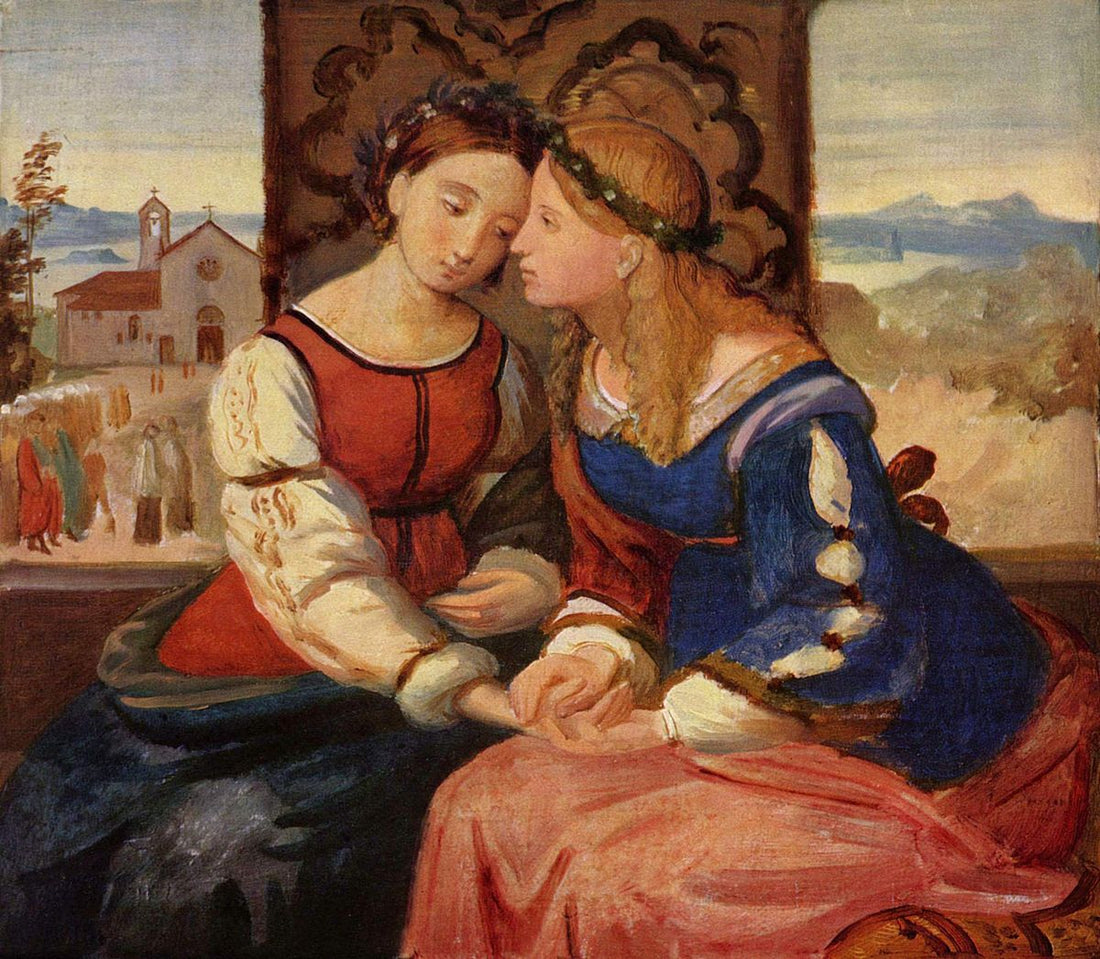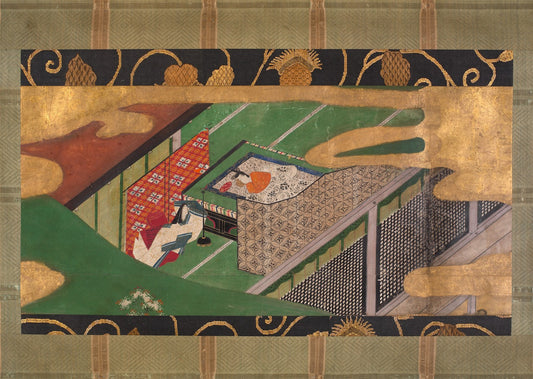Feature image: Fredrich Overbeck, Italia and Germania, c.1840-50 via Wikipedia
Six Paintings that embody the “How I love Being a Woman” trend
The “How I Love Being a Woman” trend on TikTok first appeared in 2022, and while most trends on the app are flashes in the pan, this one has stuck around. The trend, which combines an audio clip from the TV series "Anne with an E" and the Hozier song “Would That I,” has spurred an onslaught of women sharing what they love about being a woman. From silly shared loves (such as a toilet stall that has flat surfaces and hooks to place your things) to twirling in beautiful dresses, the trend has a humorous, heartwarming, and celebratory air. Some creators have used this audio to highlight the beauty of women as they appear in classic paintings and sculptures. One user invited women to visit a museum if they were having a bad body image day, while another quoted the Greek poet Sappho saying, “In the crooks of your body, I find my religion” while showing Greek statues of women. Female artists, including Shannon Jones, Rachel Lovell, and Joudy, have also used the trend to share their own works of art. In the spirit of celebrating womanhood, here are six artworks that exude some of the revelatory aspects of life as a woman.
Leopold Franz Kowalski, Dancing Maidens (1994)
What feels more carefree and feminine than a group of women in flowing dresses dancing through a field? While not all have experienced prancing through a field of flowers, dancing with your friends is a fond and common experience eliciting similar sentiments of sisterhood. There is something particularly freeing about dancing with a group of female friends.

Tawny Chatmon, Joy (2020)
Tawny Chatmon perfectly captures the joy of girlhood friendships in this work. You can almost hear the giggles emanating from the canvas. Chatmon's combination of photography with gold leaf and acrylic is strikingly beautiful. The image feels full of girlhood memories. Waves of love and nostalgia burst from the work and bring to mind memories of passing notes in school, playing dress up, and creating imaginary scenarios with your friends.
Harmonia Rosales, Creation of God (2017)
Harmonia Rosales creates powerful, breathtaking works that reimagine classic artworks with black individuals. This work replaces the white men in Michelangelo’s The Creation of Adam with black women, a powerful move that celebrates the divinity and beauty of black femininity.
Peter Paul Rubens, The Three Graces (1630-35)
Patriarchal cultural norms have, for generations, celebrated thinness, particularly among women. Diet culture, advertisements, and the beauty industry have all contributed to unattainable and unhealthy body expectations. Refreshingly, however, in this work by Peter Paul Rubens, the women are depicted with full stomachs and plump bodies. In a world before Photoshop, women’s bodies were not cinched or smoothed over but celebrated for their soft beauty. These old works remind us that women’s bodies have been subject to trends and that all bodies are good bodies and are beautiful.

Vera Alabaster, Girl Reading (1889-1964)
Vera Alabaster often painted women, but this work, in particular, feels like a simple celebration of the quiet moments found in a day. Whether curled up with a good book or taking a peaceful moment to meditate, spending time with and loving yourself should always be revered.
Sunil Laal T.R., Mid-day (2008)
Letters to Juliet said it best: "One of the great joys in life is having one's hair brushed." From braiding trains in elementary school to helping your friend prepare for the day, many women create bonds by doing each other's hair. For many women, especially native and black women, hair also holds cultural significance and takes on a deeper meaning.

While this trend is largely about the positive and loving aspects of womanhood, many have used it in more sobering ways. These videos take a more ironic approach to the phrase “How I Love Being a Woman” and share the struggles, fears, and pain that are often specific to living life in a female presenting body. These videos highlight the common experiences of women—from subtly arming themselves when walking home alone and being followed by aggressive men to being ignored by medical professionals when discussing severe pain from menstruation or birth control. Whether used to celebrate or to expose solemn realities of the femme experience under the patriarchy, this trend has created a sense of unity and solidarity among women online. It has sparked conversation, invited multiple perspectives, and generated an atmosphere of women supporting women that we hope to take with us into 2024.
©ArtRKL™️ LLC 2021-2024. All rights reserved. This material may not be published, broadcast, rewritten or redistributed. ArtRKL™️ and its underscore design indicate trademarks of ArtRKL™️ LLC and its subsidiaries.








